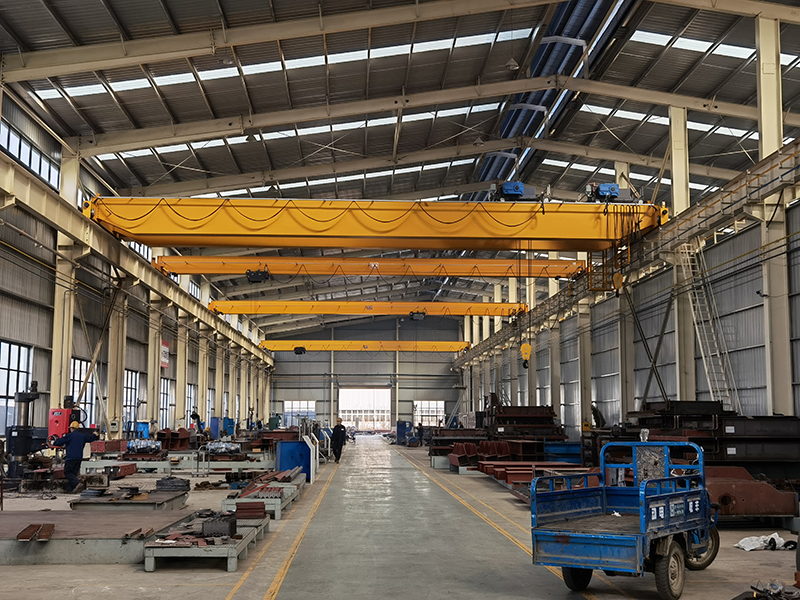In most manufacturing industries and warehouses, it is often necessary to carry materials, components, and stores from one position of the floor to other parts on the same floor easily and safely. While forklifts and other carrying equipment can be used, this requires clear access and lanes for travel, thus reducing the space available on the floor for important operations. This problem gets completely solved with the use of overhead travelling cranes, of which the electric overhead travelling crane is the most commonly in use.

These travelling cranes allow for movement of the load along the length of the area being served, as well as movement across the breadth, thus allowing loads to be lifted, carried and deposited, at any point of the floor area which it covers. These cranes have parallel runways the gap between which are bridged over by a travelling bridge that carries the hoist and also allows the hoist to travel the length of this bridge. Controls can be in a cabin mounted on the crane, or through control pendants that hang down and can be operated from the floor of the establishment. Cabins are generally used in large and heavy industries, while warehouse and other small industries may use the control pendant, that allows any one on the floor to operate it.
The electric overhead travelling crane or EOT is operated by electricity that powers the hoist, the longitudinal movement mechanism of the crane, and the traversing movement mechanism. Cranes can have single girders spanning the parallel rails or double girders doing the same duty. Single girder cranes have just one main bridge and are ideal for warehouses and light industries, while for heavier load carrying capacities, double girder cranes make for better and safer operations.
There are two main parts in any EOT crane, One is the bridge or crane girder that spans between the two parallel rails, and the second is the hoist or crab. The bridge can have one or two girders depending on the carrying capacity of the crane. It is mounted on end carriages at either end. These end carriages have four or more wheels that allow smooth movement on the parallel rails that are placed at heights above floor level and which permit the load to be moved safely. These rails are often mounted on the columns that make up the structure of the enveloping industrial structure that covers the floor area.
The lifting machinery for the crane is in the form of a hoist, electrically powered, placed on a frame that is in turn fixed on wheels, four in number, that allows the hoist to move on the girder. This arrangement allows the load hook attached to the hoist to move in three different directions. Longitudinally through the movement of the end carriages, breadthwise through the movement of the frame on which the hoist is mounted, and vertically through operations of the lifting hook attached to the hoist. Each of these operations can be controlled separately.
Most EOT cranes have girders that are box shaped allows for strength, reduce weight and hence cost. Learn more: https://steelmillcranes.com/overhead-cranes/
Electric overhead travelling crane installed in our customer’s workshop: